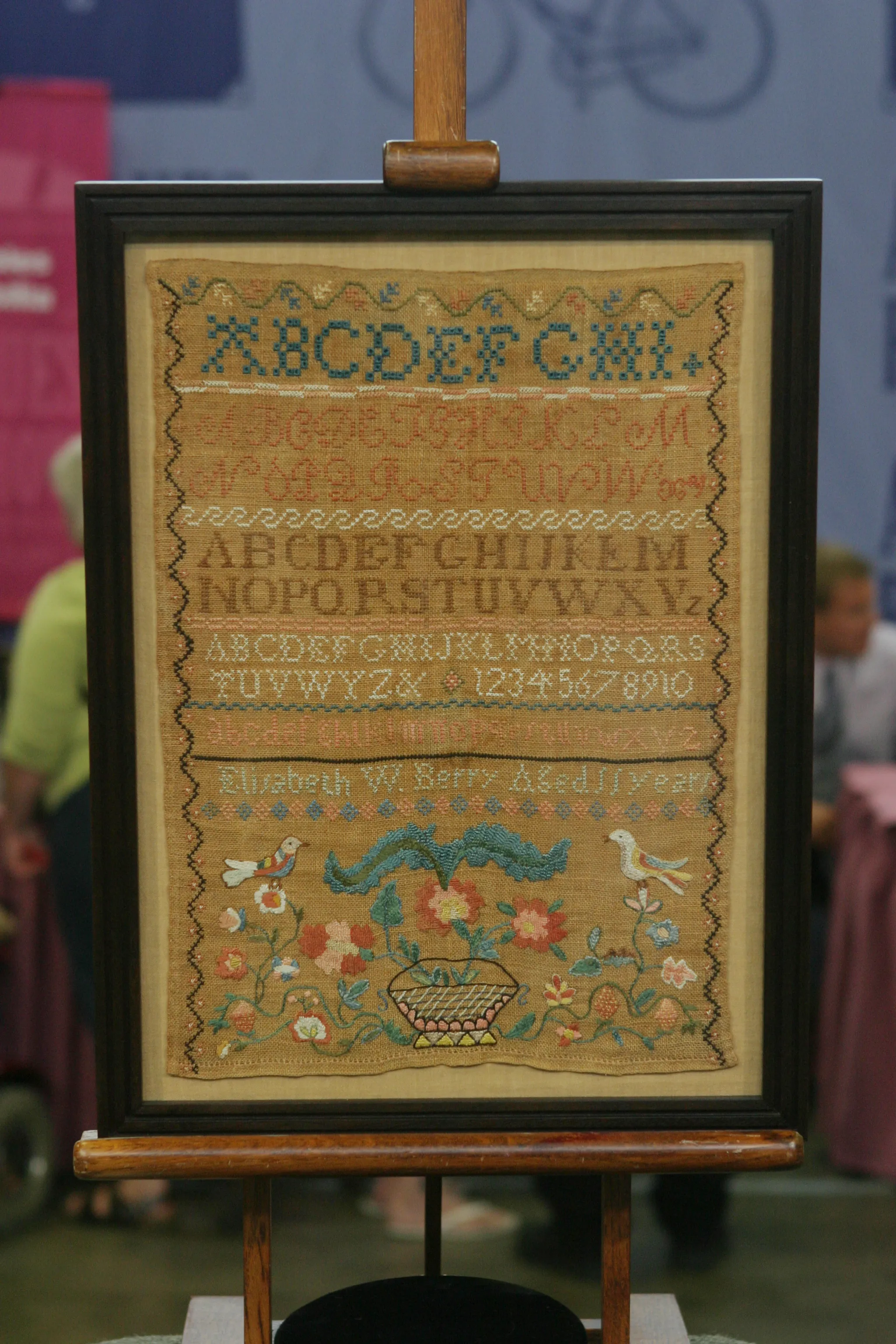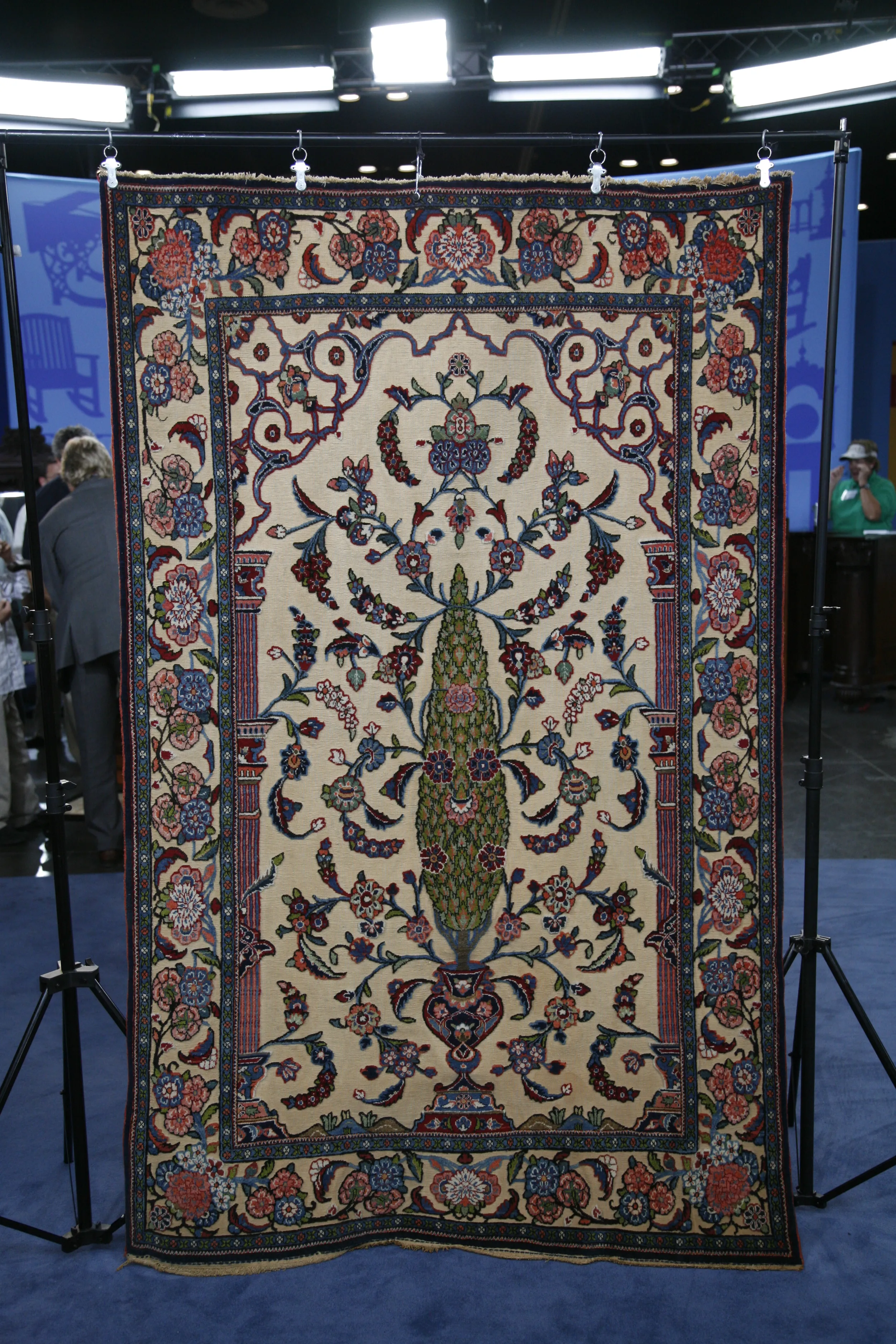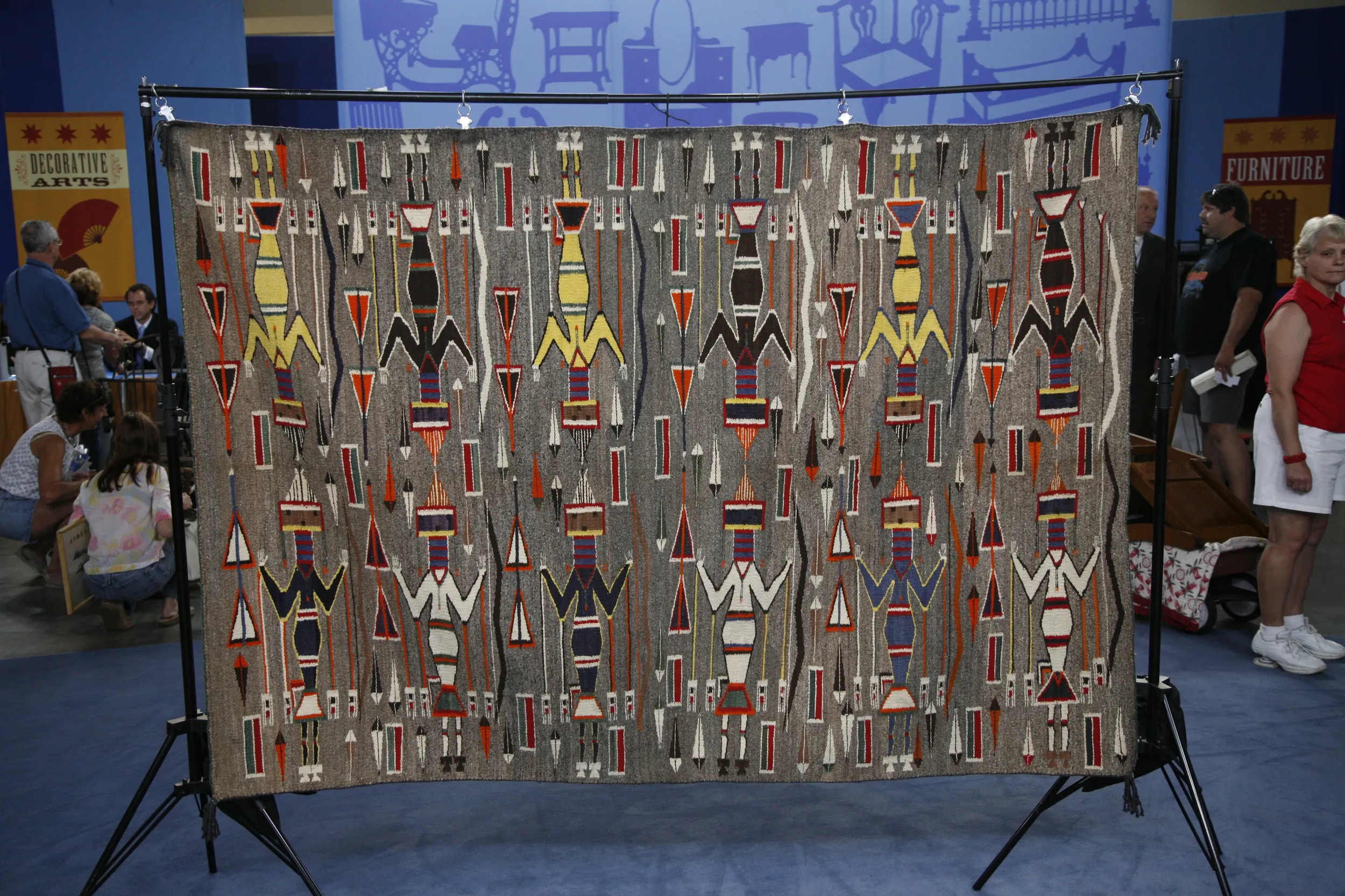APPRAISER: I was fascinated when you came through the line this morning and said that this was something that, as a child, you saw in a guest bedroom and thought, "This is a really weird thing."
GUEST: Very ugly, very depressing.
APPRAISER: So tell me a little bit about what you thought as a kid looking at it.
GUEST: It was always there and I grew up with it and I just thought it was very strange, very depressing. My friends spent the night with me in the bedroom and they always thought it was very... I kind of wished my parents would get rid of it. It was very embarrassing. And then as an adult, I got interested in needlework and I began to look at it carefully and say, "This is really impressive."
APPRAISER: It's a piece that was made in actually Hadley, Massachusetts.
GUEST: Oh, really?
APPRAISER: Yes. At a particular school called the Abby Wright School in South Hadley, Massachusetts, in the early 19th century. The way that we can tell that is that it has this very characteristic, sometimes gold, in this case silver thread that's coiled around to embellish those urns. And as I said, it was probably made in the early decades of the 19th century by a very diligent little girl...
GUEST: You think a little girl?
APPRAISER: ...in your family, whose picture, I think, is there, and she was...
GUEST: 75, yeah.
APPRAISER: And this also teaches us a lot about American history because it's not really that morbid.
GUEST: Really? (chuckles)
APPRAISER: It was the kind of mourning picture that was done in the years immediately following George Washington's death when it was a fashion for mourning art. He died in 1799 and this was made in the first decades of the 19th century as part of that kind of fashion and you can see that these are blank so that there was no particular relative that this was done for. And made in the most beautiful materials with fugitive dyes-- vegetable dyes-- that have flown away. And these were the kinds of things that families, as they moved west, kept with them. So the fact that it has shown up here in San Diego is another aspect of American history. So it's a really wonderful, wonderful piece.
GUEST: Sometimes they would have put names in those.
APPRAISER: Yeah, if there had been a convenient relative who had died, they would have been memorialized in that.
GUEST: I looked up her husband, and he died after her and I thought, "Is this the sort of thing you..."
APPRAISER: This was just something that was made.
GUEST: So you didn't do it in anticipation?
APPRAISER: Not necessarily, but there is an interested market for this and if this were to come to auction, I would guess that it would bring somewhere in the vicinity of $4,500 or $5,000.
GUEST: Wow! A friend... the reason I brought it was that a person who knew something about antiques was looking through our house and said, "This is very interesting." And so I thought, "Well, okay."
APPRAISER: It is and I'm delighted to see it.
GUEST: Great, well, thank you very much.
APPRAISER: Thank you.







